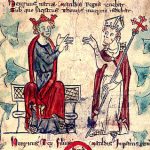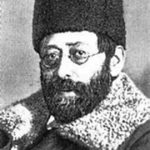In the story of the Cherokee nation can be found the finest and saddest elements of the early history of the United States of America. The ‘Plains People’ were North American Indian tribes who had inhabited a large region stretching right across modern western Virginia and the Carolinas, parts of Kentucky and Tennessee, and even northern Georgia and Alabama.
They had been there since pre-historical times, constructing the city Etowah in Georgia which became a religious centre for Mississippi cultures. Unfortunately, the Cherokee were visited by the conquistador Hernando de Soto around 1541 – an introduction to European culture which many natives did not survive.
They did not live in tents or teepees, but in longhouses strangely similar to those of Scandinavia. The system of government under which they lived was crude but effective, and at first the tribes were assimilated into the fast-expanding area which would eventually become the US.
By the seventeenth century their numbers had been reduced by European-carried diseases such as small pox and dysentery, minor versions of the plague, and venereal ailments which they did not understand, and had no means of combating. French and English settlers did what they had crossed the Atlantic to do – settle, not caring too much where.
Again the Cherokee tried to mix, trading with the new and uninvited settlers, but inevitably contact with musket-carrying hard men and women led to wars, and with each war the Cherokee lost more of their territory. Perturbed, but not yet desperate, the natives learned about farming from those settlers friendly enough to teach them. By the early part of the nineteenth century they had developed their own distinct and written language. This in turn encouraged them to produce a newspaper in the new language.
In the colonists’ war of independence against the British, the Cherokee decided to back the British, a serious mistake because they were then assaulted by American forces. By the time of the Declaration of Independence the Cherokee had lost most of their territory and a good deal of the population. Accepting this reluctantly, they designed their own Cherokee Nation in north-west Georgia through a series of treaties made with the new US federal government. But then gold was discovered on their land, which meant more violent pressure from the White settlers, who encroached further into Cherokee land.
Now came one of those mysteries with which American history is choked: The American Supreme Court upheld Cherokee treaty rights and tribal autonomy, but nobody bothered to inform local authorities about this legal decision, and the Cherokee along with many other tribes were bodily moved to new territories west of the Mississippi. Comment or debate were refused.
In 1838, in flagrant denial of the law, President Van Buren ordered the deportation of the remaining Cherokee from their own lands. They were forcibly taken to the Oklahoma Indian Territory in ‘The Trail of Tears’, aptly named; this was the route of enforced western exile for most American Indians. Eastern tribes were forcibly expelled from the east. The tribes included the Creek, Choctaw, Chickasaw and Seminole (from damp Florida), as well as the Cherokee. Death and appalling suffering accompanied the people, who had virtually no food and only the clothes on their back.
Soon even the Indians’ new lands were invaded by White settlers. By 1924 the Cherokee disbanded themselves as a tribe and having done so were given voting rights as US citizens. No one suggests that they were ‘noble savages’, but the Cherokee were too noble to fight their oppressors to the last brave and his pony, as did the Apache and the Sioux.











Leave A Comment